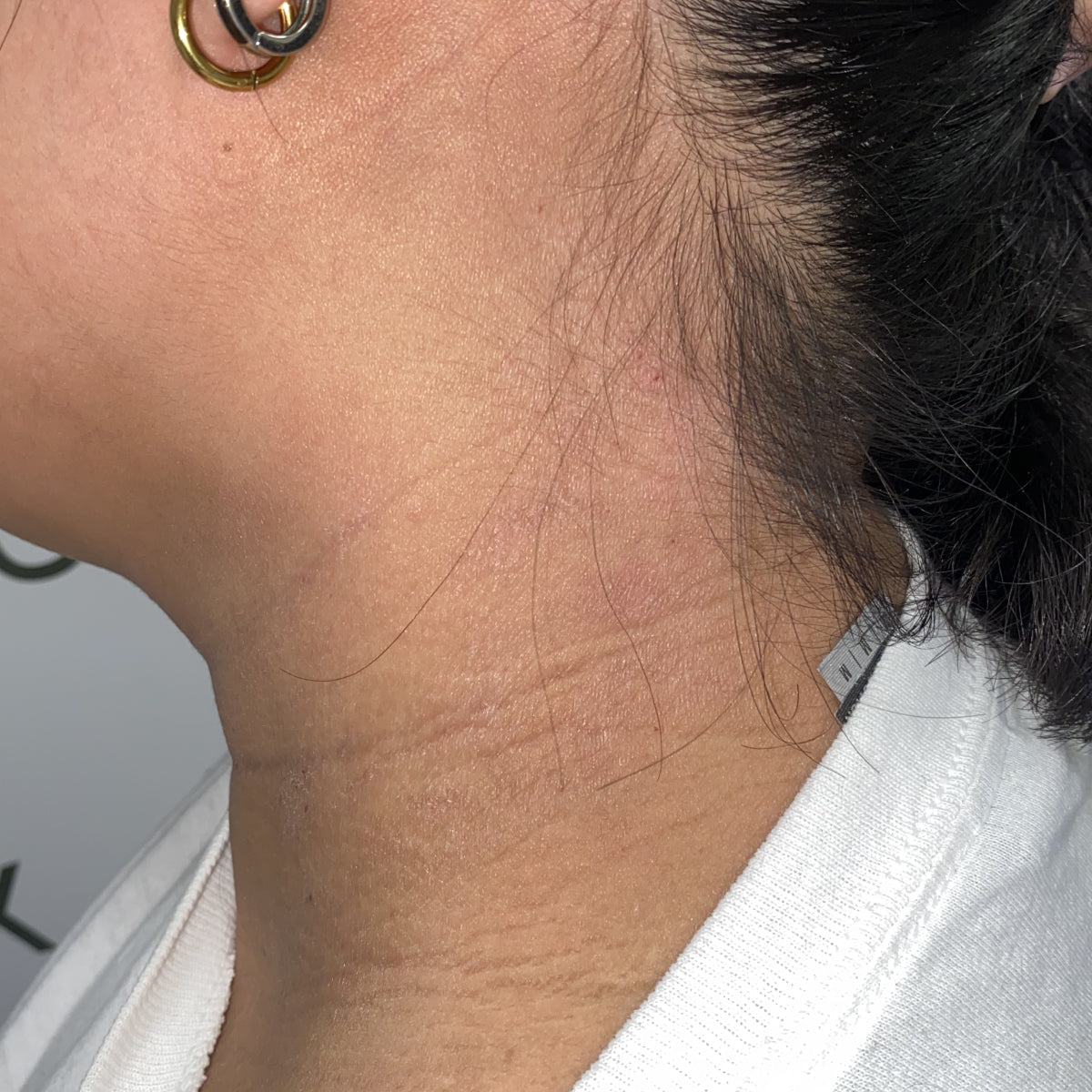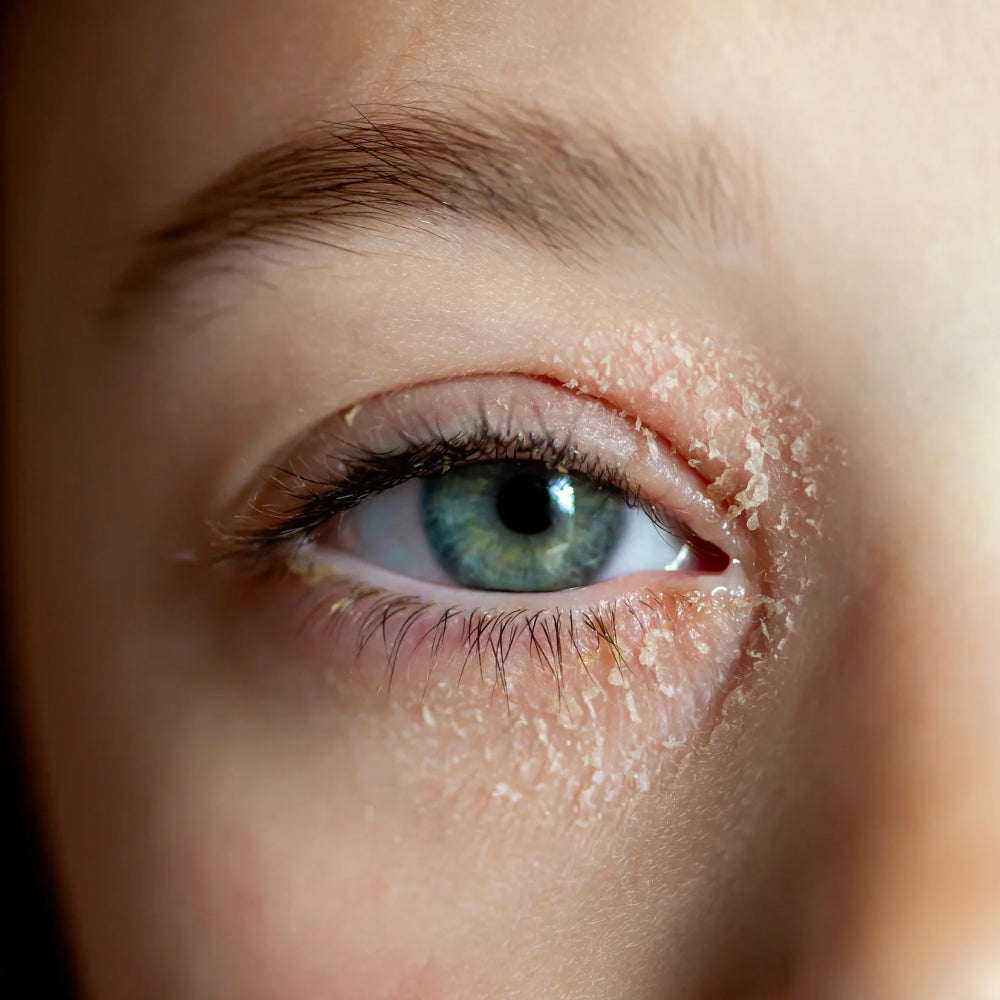Living with eczema or Psoriasis often feels like managing a moving target: a product works, until it doesn’t; a flare appears without warning. The most reliable way to ease symptoms and extend calm periods is a holistic approach that blends daily skin care, environment, nutrition, stress management, and smart medical support.
This guide delivers practical steps you can begin today to reduce itching, scaling, and redness while protecting your barrier long-term.
Understanding eczema and Psoriasis: Similarities and differences
Eczema (most commonly atopic dermatitis) and Psoriasis are both chronic inflammatory skin conditions, but they behave differently.
- Eczema basics: Often starts in childhood, linked to a weakened skin barrier and immune triggers. Symptoms include dry, itchy patches, oozing in acute flares, and lichenification from scratching. Common triggers include fragrances, harsh detergents, cold dry air, sweat, and stress.
- Psoriasis basics: An immune-mediated condition that speeds up skin cell turnover, causing thick, red plaques with silvery scale. It may be associated with joint symptoms (psoriatic arthritis) and metabolic risk factors. Triggers include infections, skin injury, certain medications, alcohol, and stress.
- Shared themes: Both benefit from moisture barrier support, trigger management, stress reduction, and consistent routines. Both can co-exist and can look similar in sensitive areas; a professional diagnosis helps guide treatment.
Daily skin routine: Calm, seal, protect
Consistency is more important than complexity. Build a 3-step routine twice daily, even when your skin looks clear.
1) Cleanse gently
- Use a fragrance-free, sulfate-free cleanser with a slightly acidic pH.
- For very dry, sensitive skin, a non-foaming cream cleanser or oil cleanser can reduce disruption.
- Limit facial and body cleansing to once daily unless visibly soiled or sweaty.
2) Treat the problem
- For eczema: During flares, apply your prescribed topical steroid or calcineurin inhibitor (like tacrolimus) to inflamed areas first. For maintenance, use these two to three times weekly on frequent flare sites.
- For Psoriasis: Apply topical steroids, vitamin D analogs (calcipotriene), or combination products to plaques. Keratolytics with salicylic acid can help lift scale before medicated treatments.
- Apply thin, even layers; wait a few minutes before moisturizing.
3) Seal with a barrier moisturizer
- Choose ointments or thick creams with ceramides, cholesterol, and fatty acids.
- For extremely dry eczema patches, petrolatum-based ointments are highly effective.
- For Psoriasis plaques, look for urea (10% for daily use) or lactic acid to soften scale, followed by an occlusive.
- Moisturize within three minutes of showering or handwashing.
Pro tip: Patch test new products on a small area for 48 hours. Avoid added fragrance, essential oils, and drying alcohols.
Smart showering and bathing habits
- Keep it short: 5–10 minutes max, lukewarm water.
- Clean smart: Wash the dirtiest areas (pits, groin, feet); let gentle cleanser run off elsewhere.
- Skip steam: Hot water strips protective lipids and worsens itch.
- After bathing: Pat dry, don’t rub. Apply medicated products first, then a thick moisturizer while skin is slightly damp.
- Consider bleach baths for eczema: If your clinician recommends them, dilute household bleach in bathwater as directed to reduce bacteria that can worsen flares.
- Scalp care: For Psoriasis, alternate medicated shampoos with coal tar, salicylic acid, or ketoconazole. Massage gently; don’t pick scale.
Clothing, bedding, and environment upgrades
- Fabrics: Wear soft, breathable layers like cotton or bamboo. Avoid scratchy wool against skin; if you must wear wool, add a soft base layer.
- Laundry: Choose fragrance-free, dye-free detergents; skip fabric softeners and dryer sheets.
- Temperature and humidity: Keep indoor humidity between 40–50%. Use a cool-mist humidifier in winter and clean it weekly.
- Bedding: Smooth, cool sheets reduce friction. Wash weekly in warm water using gentle detergent.
- Friction management: For areas prone to rubbing (elbows, waistband), apply a balm or petroleum jelly to reduce chafing and Koebner phenomenon in Psoriasis.
Nutrition for skin calm
No single diet cures eczema or Psoriasis, but balanced nutrition can lower systemic inflammation.
- Focus on: Colorful vegetables and fruits, omega-3 rich fish (salmon, sardines), extra-virgin olive oil, legumes, nuts, seeds, and whole grains.
- Protein: Ensure steady protein intake to support skin repair—lean poultry, fish, tofu, beans, Greek yogurt if tolerated.
- Hydration: Aim for regular fluids throughout the day; herbal teas and water are solid choices.
- Limit: Ultra-processed snacks, sugary drinks, and heavy alcohol intake; these can worsen inflammation and Psoriasis flares.
- Individual triggers: For eczema, common food triggers in children include egg and dairy, but do not restrict without guidance. For Psoriasis, some people report improvement reducing alcohol and maintaining a healthy weight. Consider a registered dietitian for an elimination trial only if history strongly suggests a food trigger.
Supplements? Discuss with your clinician first. Evidence is mixed, but some patients benefit from vitamin D if deficient, fish oil, or probiotics for eczema-prone kids.
Stress, sleep, and mental health
Itch increases stress; stress worsens itch. Break the cycle.
- Sleep hygiene: Cool, dark room; consistent schedule; avoid late caffeine; moisturize and treat before bed; cotton gloves or short nails to reduce nighttime scratching injuries.
- Itch relief: Scheduled antihistamines can help eczema-related nighttime itch (ask your clinician). Mindful breathing or a brief body scan at lights-out can reduce arousal.
- Stress tools: 10–15 minutes daily of yoga, stretching, walking, or meditation. Cognitive behavioral strategies help reduce scratch habits and anxiety about flares.
- Support: Consider a therapist familiar with chronic skin conditions or join a patient community for eczema or Psoriasis.
Movement and sun: Helpful, not harmful
- Exercise: Sweat can sting in eczema. Pre-exercise, apply a thin barrier layer to hotspots; choose moisture-wicking fabrics; shower promptly and moisturize after.
- Joint awareness: If you have Psoriasis plus stiffness or joint pain, ask about psoriatic arthritis. Early treatment protects mobility.
- Sun exposure: Moderate, protected sun may help Psoriasis plaques. Avoid sunburn, which can trigger new lesions. Use a mineral sunscreen (zinc oxide or titanium dioxide), fragrance-free, and patch test first.
Over-the-counter and prescription options
Over-the-counter
- Moisturizers: Look for ceramides, petrolatum, glycerin, hyaluronic acid, urea (5–10%), and dimethicone.
- Anti-itch: Short-term use of pramoxine or menthol can cool itch. Avoid topical antihistamines and benzocaine due to sensitization risk.
- Scalp and plaques: Salicylic acid or coal tar shampoos and ointments can soften scale. Follow with your prescription treatments.
When to see a dermatologist
- Rapidly worsening symptoms or extensive body surface involvement
- Signs of infection: increasing pain, warmth, oozing pus, honey-colored crusts, or fever
- Nail changes, hair loss patches, or new joint pain and swelling
- Treatments no longer working or significant impact on sleep, work, or mood
- Uncertain diagnosis between eczema and Psoriasis
Building your personal flare-up plan
A written plan helps you act early and consistently.
- Identify your top three triggers: for example, cold dry air, fragrance exposure, and stress.
- Daily maintenance: gentle cleanse, targeted treatment two to three times weekly on chronic sites, moisturize morning and night.
- Flare protocol: increase medicated topicals per your clinician’s instructions; switch to ointment-based moisturizer; reduce heat exposure; use itch-cooling lotions; schedule earlier bedtime.
- Environment tweaks: run humidifier, wear soft layers, switch to fragrance-free laundry.
- Track and review: Note flares, products, foods, stress, and weather. Adjust every 4–6 weeks.
- Share the plan: Keep copies in your bathroom and phone. If a child is affected, provide it to school or caregivers.
Conclusion: Consistency creates comfort
Eczema and Psoriasis are manageable with a steady, holistic routine that respects your skin barrier, calms your immune system, and supports your whole lifestyle. Small, consistent actions—gentle cleansing, targeted treatment, diligent moisturizing, mindful stress management, smart clothing and environment choices—add up. Partner with a dermatologist to personalize your plan, and use your flare-up checklist to act early. With the right steps in place, you can live comfortably and confidently, even with sensitive skin.

